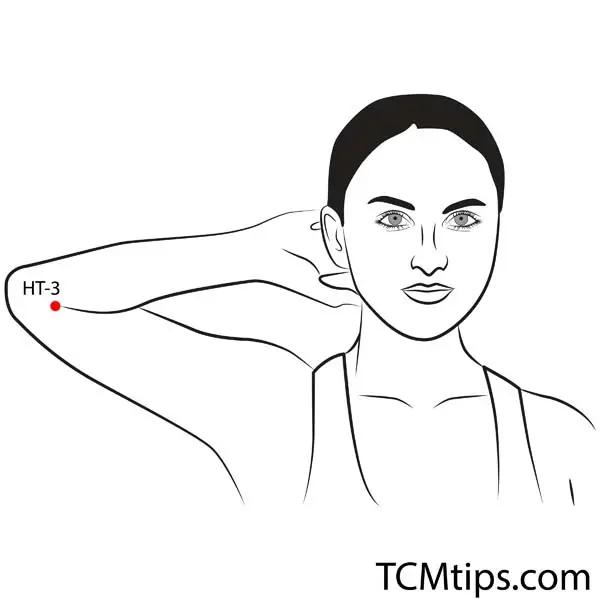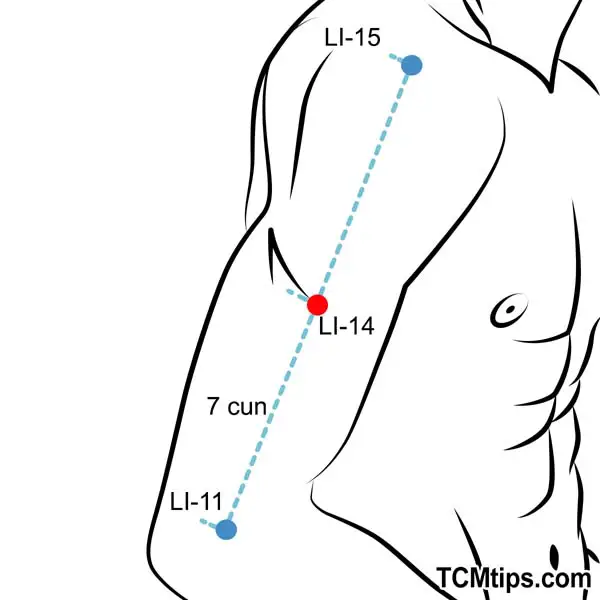If you are experiencing symptoms of swelling in the hands, arms, or feet, it could be a sign of Edema. Nonetheless, I highly suggest that you speak with your doctor for an official diagnosis to determine if acupressure for swollen hands is suitable for you. So what exactly is Edema?
Edema is the result of excess fluid build-up trapped in your body’s tissues. This condition can lead to swelling and can affect various parts of your body, especially your hands. Edema can be caused by pregnancy, specific medications, or result from a pre-existing condition such as congestive heart failure or kidney disease, to name a few.
While reading up on the effects of acupressure on swollen hands, I came across a trial study of moxibustion. Seven subjects were divided into three groups; the control group, the acupuncture group (Acp), and the acupuncture and moxibustion group (Acp-Mox).
The subjects were instructed to sit still for 60 minutes. Group Acp and Acp-Mox were administered an acupuncture treatment. It was concluded that those with treatment had increased blood flow, proving effective for improving Edema.
If Edema sounds like something you are experiencing, you have come to the right place. This post highlights the effects of acupressure treatment for Edema. We will highlight the best pressure points for swollen hands for the best solution to this condition.
What Are Symptoms Of Edema?

One of the most prominent symptoms of Edema is swelling. You might notice the puffiness of the tissue underneath your skin. Your skin could also look stretch or particularly shiny and, in some cases, creates a dimple after being pressed for several seconds.
While these are common side effects of Edema, there are additional issues Edema can cause and stem from. For a more accurate diagnosis, please speak with your primary physician so that you can tackle this condition with confidence.
What Causes Edema?
Maintaining healthy eating habits, getting good rest, and instill positive daily routines that promote productivity and wellness are essential. Many health conditions are related to these aspects of your everyday life, and Edema is no different. Whether you are born with Edema or diagnosed with it later in life, bad habits will only worsen the condition.
Lack of exercise and no supplementary warm foods will lead to overall deficiency and cold, causing poor blood circulation. Edema has to do with the accumulation of water in the human body. If it is not treated properly, it can greatly affect your appearance and internal body circulation negatively. Edema is a symptom that results from other health issues such as gastrointestinal discomfort, indigestion, diarrhea, and more.
Does Acupuncture Help Fluid Retention?

Acupuncture is an effective method for reducing fluid retention by promoting blood flow and movement of fluid throughout your body. Many rely on this form of treatment to help further alleviate joint inflammation and overall swelling of body parts.
During my research, I came across a study about the effects of meridian acupressure on postpartum women suffering from Edema, stress, and fatigue. The study consisted of 39 women split into two groups; the experimental group and the control group. It was concluded that you could experience a more significant decrease in these symptoms with the proper acupressure massage.
Pressure Points For Swollen Hands
For the best results, apply pressure to each pressure point for about 5 minutes. These pressure points can be stimulated at any time of day. The pressure should be strong enough that it feels slightly numb upon touch.
Acupoint: LI-4 (Other Names: Large Intestine-4/He Gu/Joining Valley)

The pressure point LI-4 is one of the most prominent acupoints to help reduce swelling in the hands. It serves well as one of the acupressure points for fibromyalgia as well. This pressure point can be located on the muscle that bunches collectively when your thumb and index finger are pressed together.
In addition to alleviating fibromyalgia and hand swelling, the LI-4 pressure point is excellent for treating head and face diseases. Similar to swelling in the hands, it can help reduce swelling in the face, including toothaches, neck pain, and even body aches.
However, it is essential to keep in mind that this pressure point can induce contractions. It is highly suggested not to stimulate this pressure point if you are pregnant.
Acupoint: HT-3 (Other Names: Heart-3/Shao Hai/Lesser Sea)

The pressure point HT-3 is located towards the medial epicondyle. More specifically, it sits in the depression between the cubital crease and medial epicondyle. This acupoint helps effectively smooth blood flow in the arm, ultimately relieving joint pain in the hands.
Not to mention, it can also help decimate hand tremors and reduce spasms, numbness, and overall pain in the arm and hand when it comes to acupuncture and tennis elbow.
Press each acupuncture point for about 5 minutes. It should be strong enough on time and feel a little numb when you press it; you can press the acupuncture point at any time without distinction of morning and evening.
Acupoint: LI-14 (Other Names: Large Intestine-14/Bi Nao/Upper Arm)

Similar to HT-3 acupoint, the Pressure Point LI-14 is also great for acupressure for swollen hands. LI-14 is known to improve Edema in the hands and arms. This pressure point is located on the lateral side of the upper arm at the insertion point of the deltoid muscle.
This acupoint is excellent for relieving pain in the shoulder and arm and stiffness of the neck. It is known for brightening the eyes and clearing up phlegm as well.
Press each acupuncture point for about 5 minutes. You can press the acupuncture point at any time.

Try our Anti-Aging Gua Sha Tool designed to bring out your skin’s natural glow.
Best Gua Sha Product- Anti-Aging: The tool is designed to target 11 specific aging signs such as wrinkles and sagging skin. By following the 7-step routine, users can improve skin firmness and reduce fine lines naturally.
- Enhances Skincare Routine: It works effectively with serums and lotions, boosting absorption and efficacy of skincare products.
- Visible Skin Improvement: Users can expect a smoother complexion, reduced puffiness, and a more youthful appearance.
 P. Sze
P. Sze 

















